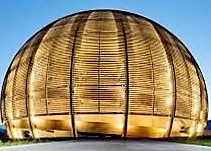Speaker
Description
We will summarize the status of big-bang nucleosynthesis (BBN), which describes the production of the lightest nuclides during the first three minutes of cosmic time. We will emphasize the transformational influence of cosmic microwave background (CMB) experiments culminating today with Planck, which pin down the cosmic baryon density to exquisite precision. Standard BBN combines this with the Standard Model of particle physics, and with nuclear cross section measurements--notably recent precision measurements of d(p,g)3He by the LUNA collaboration. These allow BBN to make tight predictions for the primordial light element abundances, with the result that deuterium observations agree spectacularly with these predictions, and helium observations are in good agreement. This CMB/BBN concordance marks a great success of the hot big bang, and BBN and the CMB together now sharply probe cosmology, neutrino physics, and dark matter physics at times around 1 second. But this success is tempered by lithium observations (in metal-poor halo stars) that are significantly discrepant with BBN+CMB predictions. We will summarize possible resolutions to this "lithium problem," highlighting recent work that strengthens the case for a a solution involving stellar astrophysics, while solutions involving new physics are becoming ever more constrained. We conclude with an outlook for how future CMB, astronomical, and laboratory measurements can better probe new physics, and shed light on the solution to the lithium problem.
